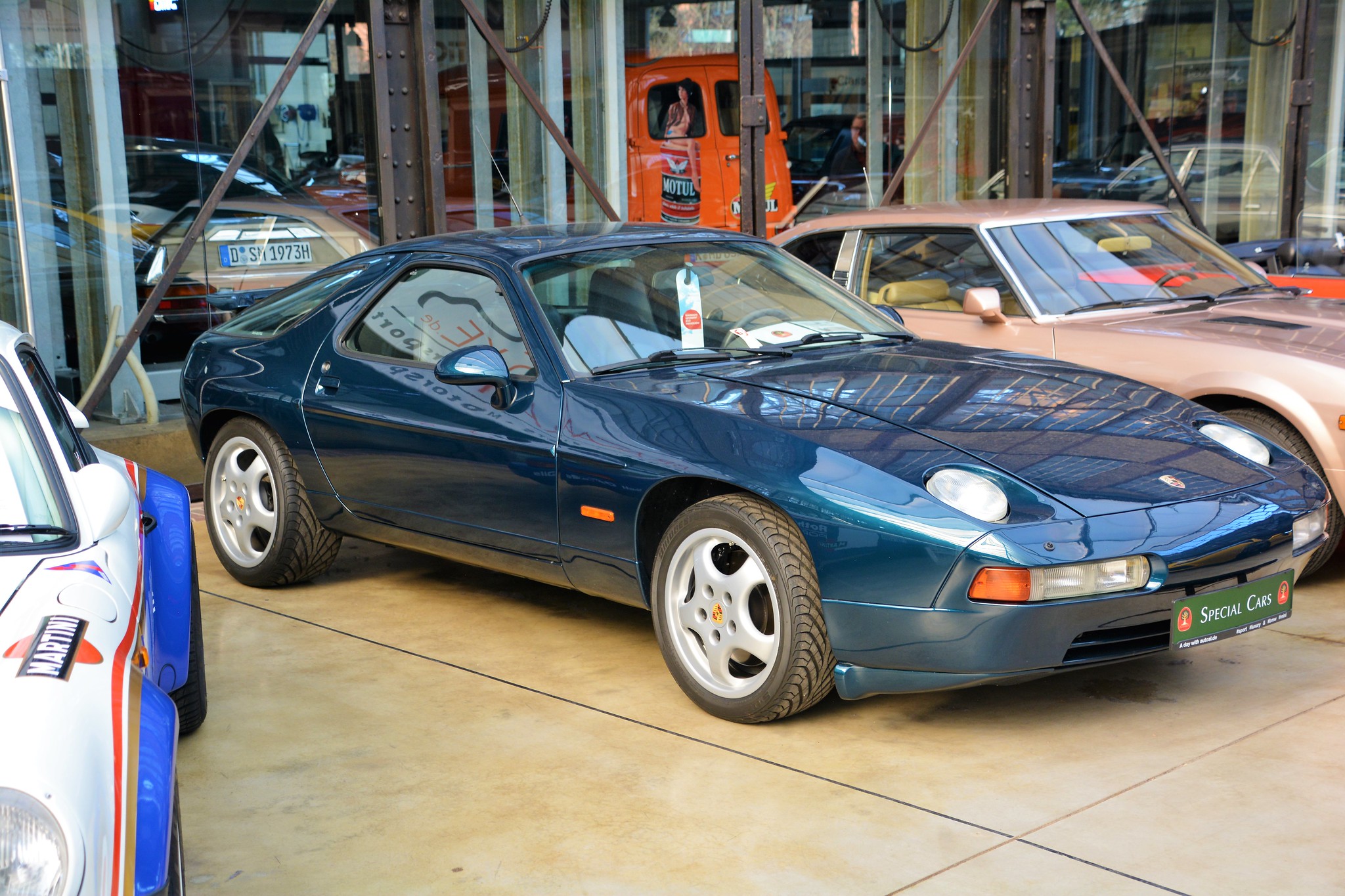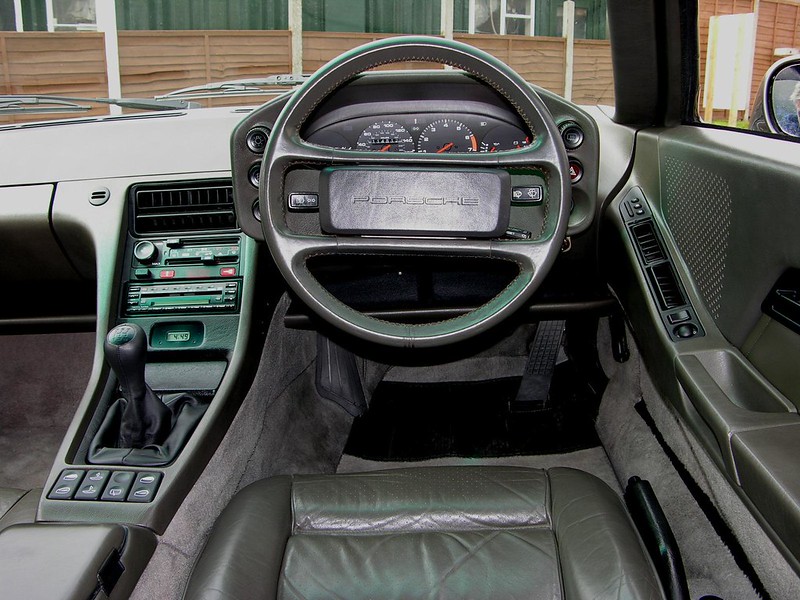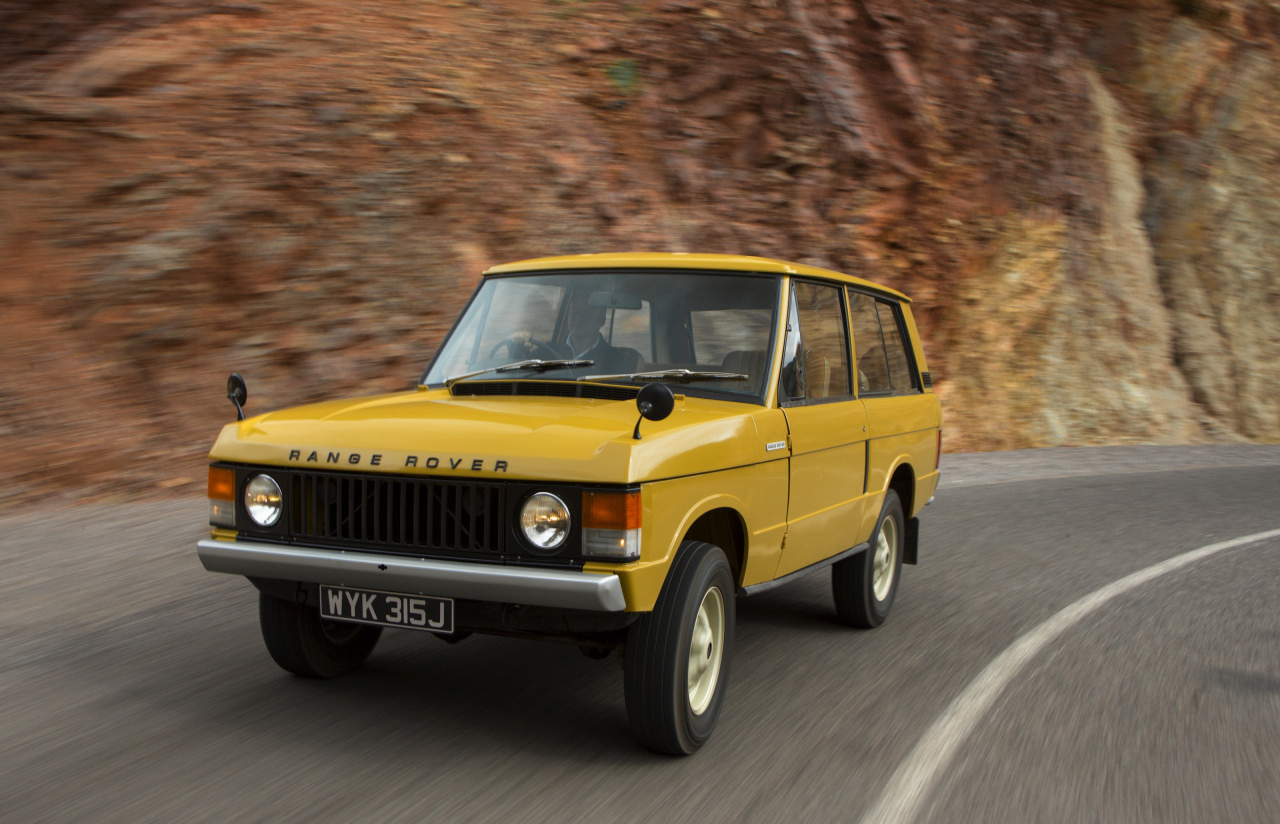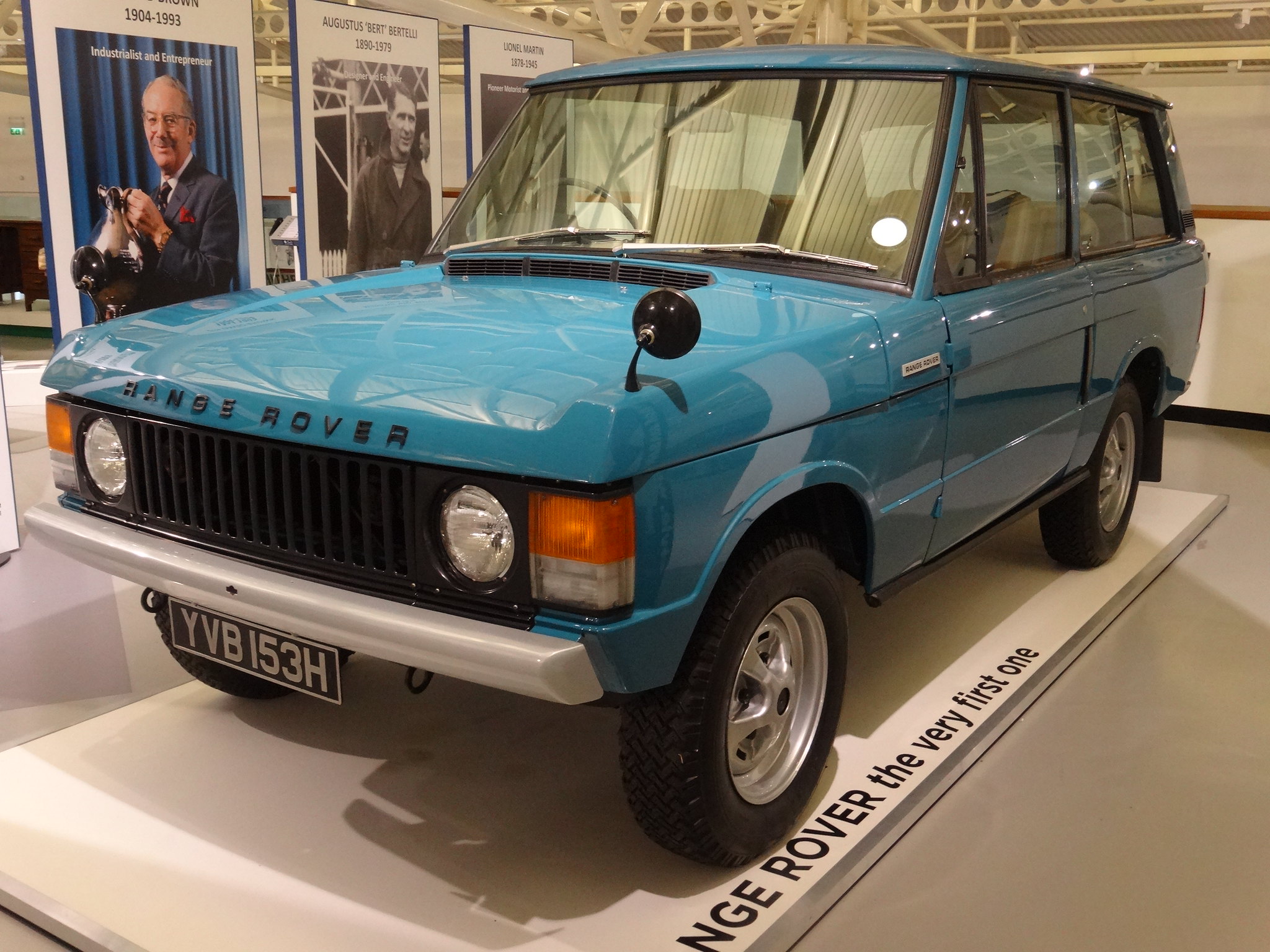The Swinging Seventies
The 1970s are probably the most underrated decade for cars.
Each of the following classic 70s cars brought something unique to the automotive world, leaving an indelible mark on history.

The Porsche 928: The Quintessential 70s Car
The Porsche 928 earned its reputation as a "cool" and distinctive sports car for several reasons, which set it apart from its contemporaries during its production from 1977 to 1995.
 Alexander Migl, CC BY-SA 4.0, Wikimedia Commons
Alexander Migl, CC BY-SA 4.0, Wikimedia Commons
928 Front-Engine Layout
Unlike the iconic Porsche 911, which had a rear-engine configuration, the 928 featured a front-engine, rear-wheel-drive layout. This design choice allowed Porsche to offer a vehicle that could go the distance with speed.
 ilikewaffles11, CC BY 2.0, Wikimedia Commons
ilikewaffles11, CC BY 2.0, Wikimedia Commons
Porsche Offers The Grand Tour
The 928 front-engine, rear-wheel drive design created a car with a more balanced weight distribution and enhanced handling characteristics, making it a capable grand tourer. With Porsche, there's always more.
928: An Innovative Design
The 928's design was ahead of its time with its smooth, aerodynamic shape and pop-up headlights. Porsche 928 featured a groundbreaking design in its era, combining performance with distinctive aesthetics.
The Future Is A Porsche 928
The 928 combined elegant curves with muscular lines, giving it a unique and futuristic appearance that stood out in the late 1970s automotive landscape.
Porsche 928: V8 Engine
At its heart was a powerful V8 engine, a departure from the traditional flat-six engines Porsche used in the 911. The 928 initially featured a 4.5-litre V8 engine.
 The Car Spy, CC BY 2.0, Wikimedia Commons
The Car Spy, CC BY 2.0, Wikimedia Commons
The Heart Of A Porsche
The 928's engine provided ample power and torque, delivering a refined driving experience suitable for long-distance touring. Remember those summer vacations with the family? A car's interior is as important as what's under the hood.
 Decampos, CC BY-SA 4.0, Wikimedia Commons
Decampos, CC BY-SA 4.0, Wikimedia Commons
The Porsche 928 Luxurious Interior
The interior of the 928 was well-appointed with high-quality materials, comfortable seating, and advanced features for its time. It offered amenities such as power-adjustable seats, a premium sound system, and air conditioning, making it a comfortable and sophisticated grand tourer.
928 Driving Dynamics
Despite its larger size, the 928 offered impressive handling and performance. Porsche engineered the 928 with advanced suspension technology and precise steering. It can tackle corners with agility while providing a smooth highway ride.
Porsche 928 And Its Cultural Impact
The 928 gained further recognition and desirability through its appearances in popular culture, including movies, TV shows, and video games. Its association with luxury, performance, and innovation cemented its status as a "cool" and aspirational sports car.
Not A One-Trick Porsche
Overall, the Porsche 928 was revered not only for its technical prowess and performance capabilities, but also for its distinctive design, luxurious features, and ability to redefine what a high-performance grand tourer could be.
The Porsche Legacy
Porsche's legacy is celebrated among automotive enthusiasts and collectors as a symbol of its innovation and engineering excellence.
The Ferrari 308 GTB
Like the Porsche 928, the Ferrari 308 GTB showcased its powerful engine, advanced suspension system, and precise handling characteristics, making it thrilling to drive.
 Vauxford, CC BY-SA 4.0, Wikimedia Commons
Vauxford, CC BY-SA 4.0, Wikimedia Commons
Ferrari 308 GTB: A Timeless Design
Designed by Pininfarina, the Ferrari 308 GTB has a classic and timeless design that has aged beautifully. Its sleek, low-slung profile and distinctive features set it apart. You will always remember where you parked!
 Adam Weston, CC BY-SA 4.0, Wikimedia Commons
Adam Weston, CC BY-SA 4.0, Wikimedia Commons
Pininfarina and Ferrari: Design Expertise And Engineering Power
Pininfarina has a rich history of designing some of the most iconic and beautiful cars in automotive history. Founded in 1930 by Battista "Pinin" Farina, the company has worked with numerous prestigious automakers like Ferrari.
 Alexander Migl, CC BY-SA 4.0, Wikimedia Commons
Alexander Migl, CC BY-SA 4.0, Wikimedia Commons
1975 Ferrari 308 GTB: Never Lost In A Crowd
The 308 GTB's angular front grille, pop-up headlights, and sculpted body lines instantly make it recognizable and highly desirable among collectors and enthusiasts. But what lies under the hood?
1975 Ferrari 308 GTB: Mid-Engine Layout
The 308 GTB boasts a mid-engine layout, placing its V8 engine behind the driver for optimal weight distribution and handling dynamics. This configuration contributes to its superb balance, agility, and responsiveness, making it a joy to drive on both road and track.
You Need A Ferrari Engine For Exhilarating Performance
Powered by a 3.0-liter V8 engine, the Ferrari 308 GTB delivers exhilarating performance. In its time, it offered impressive horsepower and a thrilling engine roar that enhanced the driving experience.
It was capable of achieving speeds and acceleration that were impressive for its era.
 Thesupermat, CC BY-SA 4.0, Wikimedia Commons
Thesupermat, CC BY-SA 4.0, Wikimedia Commons
1975 Ferrari 308 GTB As A Cultural Icon
The 308 GTB gained additional fame through its association with popular culture, particularly its prominent role as the car driven by Tom Selleck's character in the television series Magnum, P.I.
This exposure helped elevate its status as an automotive icon of the 1970s and 1980s.
 Tokumeigakarinoaoshima, CC BY-SA 4.0, Wikimedia Commons
Tokumeigakarinoaoshima, CC BY-SA 4.0, Wikimedia Commons
308 GTB Offers Handcrafted Excellence
Like all Ferraris of its era, the 308 GTB was meticulously handcrafted in Maranello, Italy, using high-quality materials and craftsmanship.
Each car was a testament to Ferrari's dedication to building performance-oriented sports cars.
The 1975 Ferrari 308 GTB Is A Collector's Dream
As a Ferrari classic, the 308 GTB holds significant collector's appeal.
Its limited production numbers, timeless design, and association with Ferrari's racing heritage contribute to its high desirability and value in the classic car market.
It's A Ferrari: Why Say More?
The '75 308 GTB represents a golden era of Ferrari sports cars. It continues to captivate enthusiasts who appreciate its style, performance, and heritage blend.
 François de Dijon, CC BY-SA 3.0, Wikimedia Commons
François de Dijon, CC BY-SA 3.0, Wikimedia Commons
Standing Out Through Innovation
Just as the '75 Ferrari's innovative design set it apart in its respective categories, Range Rover pioneered the luxury SUV segment. The 1970 Range Rover is highly regarded for several compelling reasons, contributing to its iconic status and enduring popularity.
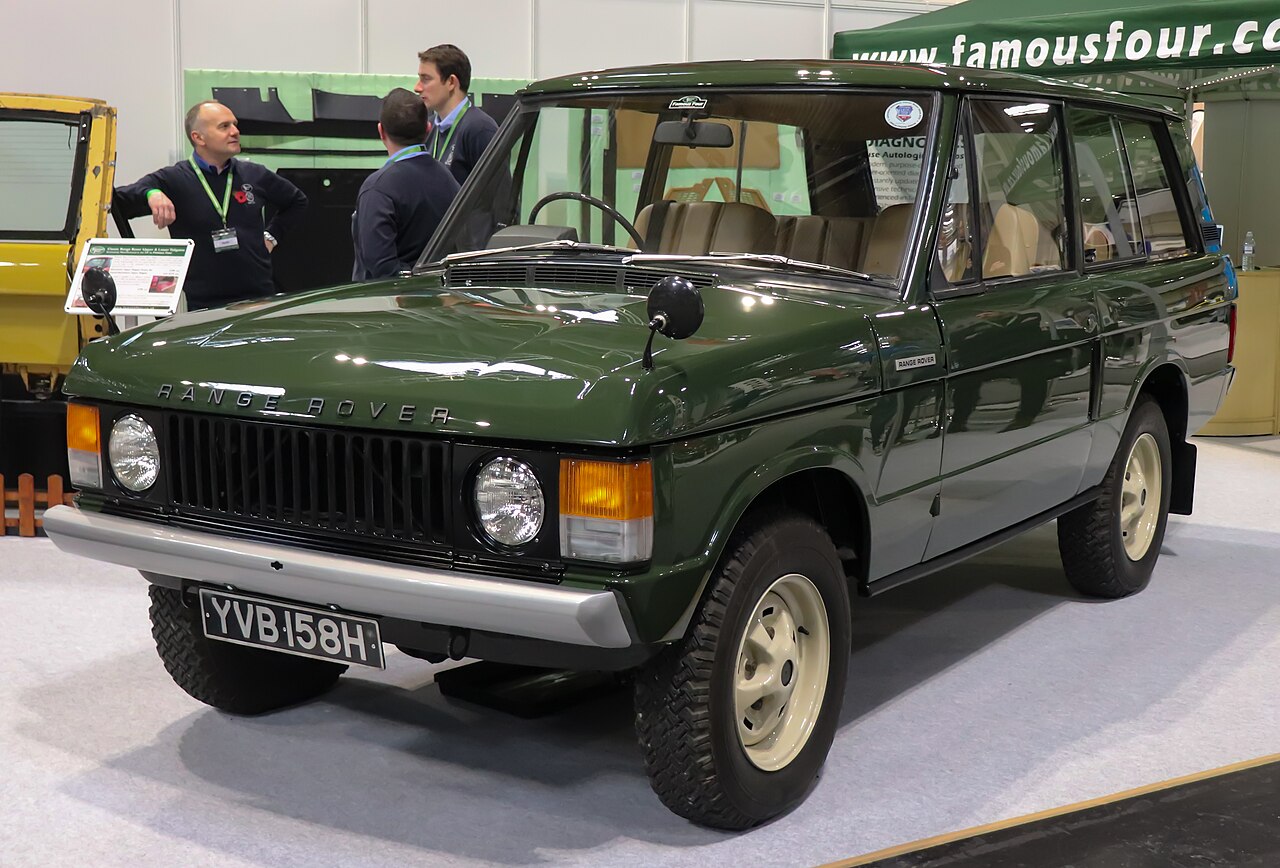 Vauxford, CC BY-SA 4.0, Wikimedia Commons
Vauxford, CC BY-SA 4.0, Wikimedia Commons
1970 Range Rover: Pioneering SUV Design
The 1970 Range Rover was one of the first true luxury SUVs. It blends off-road capability with comfort and refinement. Its distinctive boxy design, featuring a split tailgate and floating roof, set it apart from other vehicles of its time.
Range Rover’s Versatile Off-Road Performance
The 1970 Range Rover was built using a robust ladder-frame chassis, permanent four-wheel drive, and advanced suspension. It introduced innovations like long-travel coil spring suspension, which provided superior traction in challenging terrain. But is it comfortable?
Is It Nice Inside? Of Course, It’s A Range Rover!
You bet! Despite its rugged capabilities, the 1970 Range Rover offered a luxurious and comfortable interior. It featured plush seating, wood trim, and premium materials.
Everyone deserves a refined driving experience on and off-road, right?
A Powerful Engine Is A Must With A Range Rover
Off-road is excellent if you don't get stuck! Initially equipped with a 3.5-litre V8 engine, the Range Rover delivered ample power, tackling rough terrain while providing smooth highway acceleration. This combination of power and refinement was unprecedented in SUVs then.
 Jozg44, CC BY-SA 3.0, Wikimedia Commons
Jozg44, CC BY-SA 3.0, Wikimedia Commons
1970 Range Rover: Overall Innovative Features
Range Rover introduced several innovative features, such as full-time four-wheel drive, disc brakes on all wheels, and a spacious interior layout with foldable rear seats, which set a new standard for SUV functionality and comfort.
The Enduring Legacy of the 1970 Range Rover
Over five decades, Range Rover has become a global icon synonymous with luxury and capability. Its ability to combine rugged off-road prowess with sophisticated design and advanced technology continues to resonate worldwide.
 Rutger van der Maar, CC BY 2.0, Wikimedia Commons
Rutger van der Maar, CC BY 2.0, Wikimedia Commons
A Different Segment, Just As Impressive
Despite their differences, all these vehicles excelled in performance and handling. The 1976 Honda Accord also holds a special place among the best cars of the 1970s—but this time, it's something a little different.
 Rainmaker47, CC BY-SA 3.0, Wikimedia Commons
Rainmaker47, CC BY-SA 3.0, Wikimedia Commons
1976 Honda Accord: Introduction of Something New
The Honda Accord was one of the earliest models to introduce the concept of a compact Japanese sedan to the American market. It filled a niche between smaller economy cars and larger sedans.
Significant Changes In The 1970s Automotive World
The 1970s oil crisis led to skyrocketing fuel prices and shortages. This event prompted a shift towards smaller, more fuel-efficient cars—the perfect time for Honda to make their mark.
 RL GNZLZ, CC BY-SA 2.0, Wikimedia Commons
RL GNZLZ, CC BY-SA 2.0, Wikimedia Commons
The 76 Accord Has You Covered
Honda offered the appeal of fuel efficiency, reliability, and practicality. The '76 Honda Accord stood out with its economic performance, making it a leader in producing efficient and environmentally conscious vehicles.
 Riley, CC BY 2.0, Wikimedia Commons
Riley, CC BY 2.0, Wikimedia Commons
1976 Honda Accord: Reliability and Durability
Honda's reputation for reliability and durability began with models like the Accord. It was engineered with attention to detail, using quality materials and components contributing to its long-term reliability. But was the '76 Accord innovative? You bet!
1976 Honda Accord: A Design Ahead Of Its Time
The 1976 Accord featured a spacious interior, comfortable seating, and a well-thought-out layout that maximized passenger and cargo space. Its efficient use of space and practical features set a benchmark for compact car design. And the drive?
76 Accord Offers Size And Strength
Despite its compact size, the Accord offered agile handling and a smooth ride. The '76 Accord made driving enjoyable in urban environments and highways—a far more common occurrence for most drivers than the open road.
Its responsive steering and well-tuned suspension contributed to its reputation as a fun-to-drive car.
Cultural Impact Of The Accord
The '76 Accord's success made subsequent generations of Accord models popular. Honda has influenced the automotive industry's approach to compact and mid-size sedans ever since.
 Riley, CC BY 2.0, Wikimedia Commons
Riley, CC BY 2.0, Wikimedia Commons
Honda: Known For Its Longevity and Legacy
The Accord's legacy extends beyond its initial launch in 1976. It has consistently ranked among the best-selling cars in the United States and earned numerous awards for its reliability, safety features, and overall value.
 Grzegorz Czapski, Shutterstock
Grzegorz Czapski, Shutterstock


